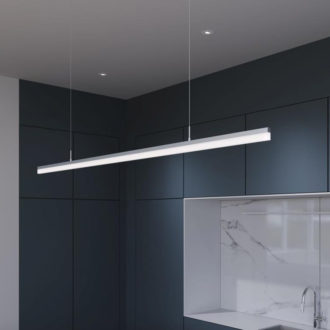Downlighting Vs Uplighting: What lighting is best for you? August 12, 2024 – Posted in: Lighting Information, Office Lighting

Table of Contents
Have you been struggling to create the perfect ambiance in your home with the right lighting? It’s a common challenge that many of us face, and it can be frustrating to find the right balance between functionality and aesthetics.
After extensive research and testing, we’ve discovered the key differences between down lighting and up lighting for indoor spaces. In this article, we’ll share our insights to help you choose the best lighting scheme for your home, ensuring that each room has the perfect illumination to suit its purpose.
Key Points
- Uplighting shines light upward to highlight ceilings or walls, creating an inviting ambiance in larger spaces, while downlighting points light downwards to provide focused illumination for specific tasks or areas.
- When choosing between uplighting and downlighting, consider the room’s purpose, size, ceiling height, and the desired balance between ambiance and function. Uplighting works well for creating atmosphere and highlighting features, while downlighting is ideal for task-oriented areas like kitchens and bathrooms.
- To achieve the perfect lighting balance, consider layering both uplighting and downlighting in the same space, using energy-efficient LED bulbs, and experimenting with fixture placement to minimize glare and shadows.
- According to the IES, an average space of 250 sq. ft. requires about 5,000 lumens, and factors like wall color, ceiling height, and furniture arrangement influence the required lighting levels.
- We suggest using dimmers to adjust light levels based on personal preference and the room’s function, allowing for versatility in creating the ideal atmosphere for various activities throughout the day.
Understanding Up lighting and Down lighting
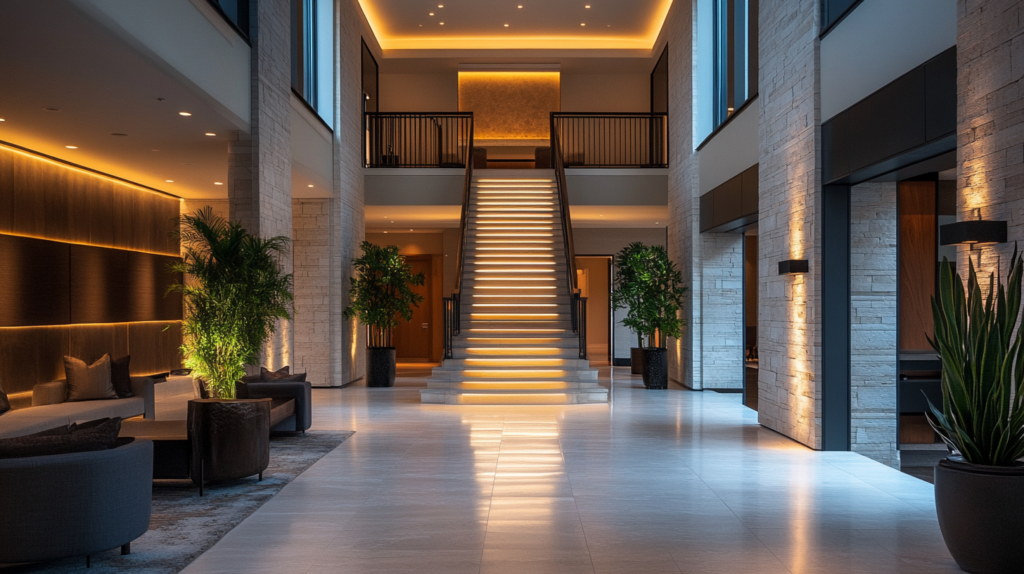
Definition and differences
When it comes to indoor lighting, two terms that often come up are up-lighting and down-lighting. Uplighting refers to light fixtures that shine light upwards, illuminating the ceiling and creating a soft, diffused glow.
This type of lighting is often used to highlight architectural features, plants, or artwork. On the other hand, downlighting shines light downward from fixtures mounted on the ceiling or high on the walls.
Recessed lights, pendant lights, and wall sconces are common examples of downlighting fixtures.
The main difference between uplighting and downlighting lies in the direction of the light. Uplighting creates a more ambient and indirect light, while downlighting provides a more focused and direct light.
Uplighting is great for creating a great atmosphere, while downlighting is ideal for task-oriented areas like kitchens and bathrooms where brighter, more concentrated light is needed.
In our experience, a well-designed lighting plan often incorporates both uplights and downlights to create a balanced and comfortable environment.
Light is to the eye what music is to the ear. – Bjarne Schlager
Examples of when each is used
- Uplighting and downlighting are two distinct lighting techniques used in various settings to create different visual effects and serve specific purposes. Let’s explore some examples of when each type of lighting is commonly used:
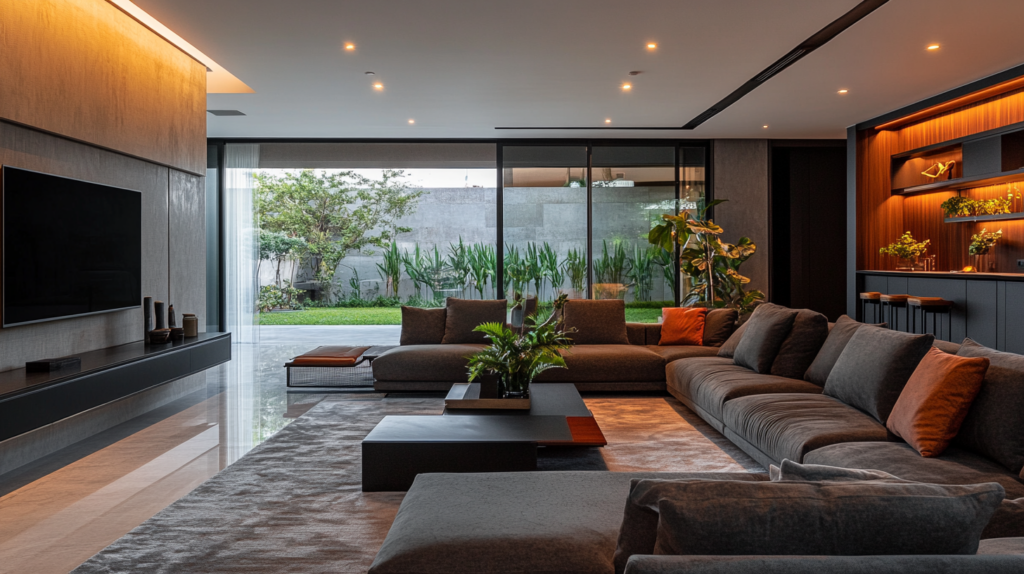
Uplighting:
- Highlighting architectural features: We often use uplighting to accentuate unique architectural elements such as columns, arches, or textured walls. By placing light fixtures at the base of these features and directing the light upwards, we create dramatic shadows and emphasize their visual appeal.
- Creating ambiance in large spaces: In spacious areas like banquet halls, ballrooms, or high-ceiling living rooms, we employ uplighting to create a grand atmosphere. Uplights placed along the perimeter of the room or behind furniture cast a soft, diffused glow that enhances the overall ambiance.
- Illuminating artwork and wall décor: To draw attention to paintings, tapestries, or other wall-mounted artwork, we strategically position uplights below or beside them. This technique bathes the artwork in a gentle, focused light, making it a captivating focal point in the room.
- Enhancing landscaping and outdoor features: In outdoor settings, we utilize uplighting to showcase trees, sculptures, or water features. By placing light fixtures at ground level and aiming them upwards, we create stunning visual effects that highlight the beauty of these elements and add depth to the landscape.
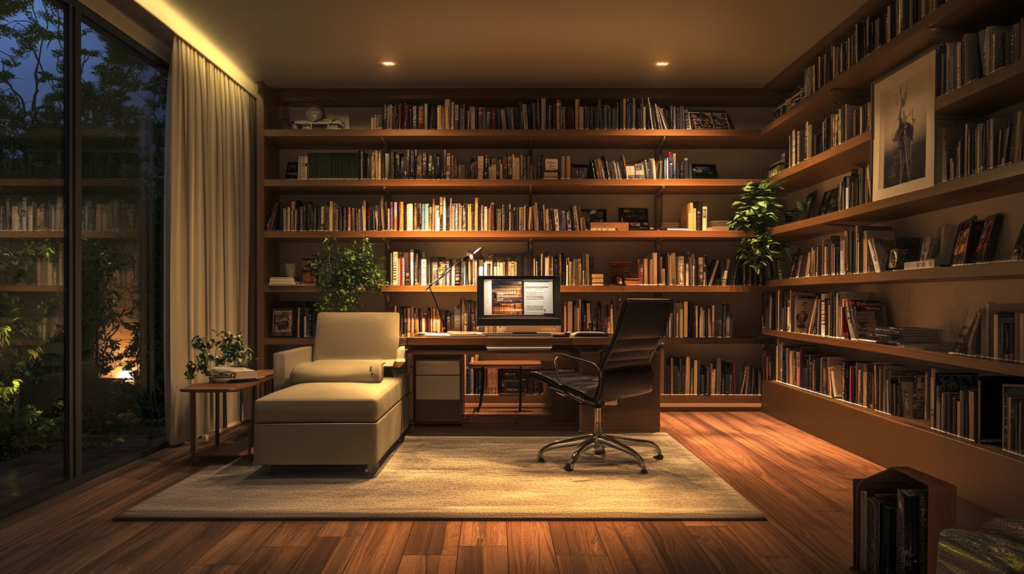
Downlighting:
- Task lighting in workspaces: In areas where focused lighting is essential, such as kitchen countertops, home offices, or workshop benches, we rely on downlighting. Recessed or pendant light fixtures direct light downwards, providing ample illumination for tasks that require precision and clarity.
- Illuminating bathroom vanities and mirrors: To ensure optimal lighting for grooming and personal care, we install downlights above bathroom vanities and mirrors. This targeted lighting minimizes shadows and provides even illumination for tasks like applying makeup or shaving.
- Accent lighting for showcasing objects: When we want to highlight specific objects or collections, such as artwork, sculptures, or display shelves, we use downlighting. By placing recessed or track lights directly above these items, we create a concentrated beam of light that draws the eye and showcases their beauty.
- General lighting in living areas: In spaces like living rooms, dining rooms, or bedrooms, we often incorporate downlighting as part of the overall lighting scheme. Recessed lights or pendant fixtures provide a comfortable level of ambient light, creating a functional and inviting atmosphere for daily activities.
Pros and Cons of Uplighting

Uplighting can create a warm and inviting atmosphere in larger spaces. It may not provide enough focused light for specific tasks or activities.
Better for larger spaces and creating ambiance
We find uplighting to be an excellent choice for larger spaces with high ceilings, such as grand living rooms, spacious foyers, or even outdoor patios. By strategically placing uplight fixtures, we can draw attention to architectural features like ornate moldings, exposed beams, or textured walls, making the space feel more expansive and visually interesting.
Uplighting creates a warm, inviting ambiance that envelops the entire area in a soft, diffused glow.
When we want to set the mood for a gathering or create a relaxing atmosphere, uplighting is our go-to solution.
May not provide enough focused light for tasks

While up-lighting can add a warm and inviting ambiance to a room, it may not provide enough focused light for specific tasks like reading, cooking, or working at a desk. The diffused, indirect light from uplighting fixtures, such as wall sconces or floor lamps, illuminates the ceiling and walls but may leave work surfaces insufficiently lit.
In these areas, we might need the direct, concentrated light that downlighting provides to ensure adequate visibility and reduce eye strain.
To strike a balance between ambiance and functionality, we can layer uplighting with task-oriented downlighting. Recessed ceiling lights, pendant lamps, or track lighting can direct light exactly where it’s needed, complementing the overall room lighting.
By combining these two types of lighting strategically, we create a well-rounded lighting design that adapts to different activities and moods in the space.
Pros and Cons of Downlighting
Here are some pros and cons of downlighting to consider when choosing the best indoor illumination for your space. On the plus side, downlights provide focused light that’s ideal for task-oriented areas like kitchens and bathrooms.
They can highlight specific design elements or features you want to draw attention to, like artwork or architectural details.
Ideal for task-oriented areas
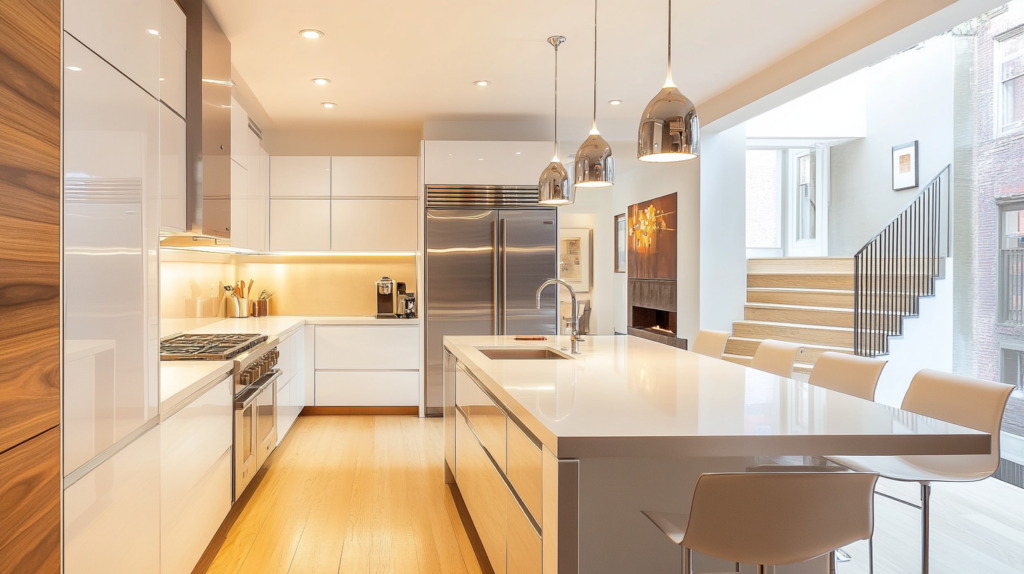
We find downlighting to be the perfect choice for areas in our home that require focused light, such as kitchen countertops, workspaces, and reading nooks. The bright and concentrated light provided by these fixtures, like recessed ceiling lights or pendant lamps, ensures that we can easily see what we’re doing without straining our eyes.
This type of lighting is especially crucial in spaces where precision and clarity are essential, allowing us to chop vegetables, measure ingredients, or read fine print without any difficulty.

Whether we’re preparing a meal, working on a craft project, or simply enjoying a good book, the targeted light cast by downlighting fixtures creates an environment that is both practical and comfortable.
May not provide overall ambiance
One potential drawback of downlighting is that it may not provide the overall ambiance desired in a space. While downlights excel at illuminating specific areas, such as countertops or desks, they often fall short when it comes to highlighting the atmosphere.

The focused beams of light can leave surrounding areas dimly lit, resulting in a room that feels less cozy and welcoming.
To combat this issue, we may need to incorporate additional lighting fixtures or techniques to achieve a balanced and inviting ambiance. Uplighting, for example, can be used to softly illuminate walls and ceilings, adding depth and dimension to the room.
By combining downlighting for task-oriented areas with uplighting for ambient illumination, we can create a space that feels both functional and comfortable.
Choosing the Best Option for Your Space
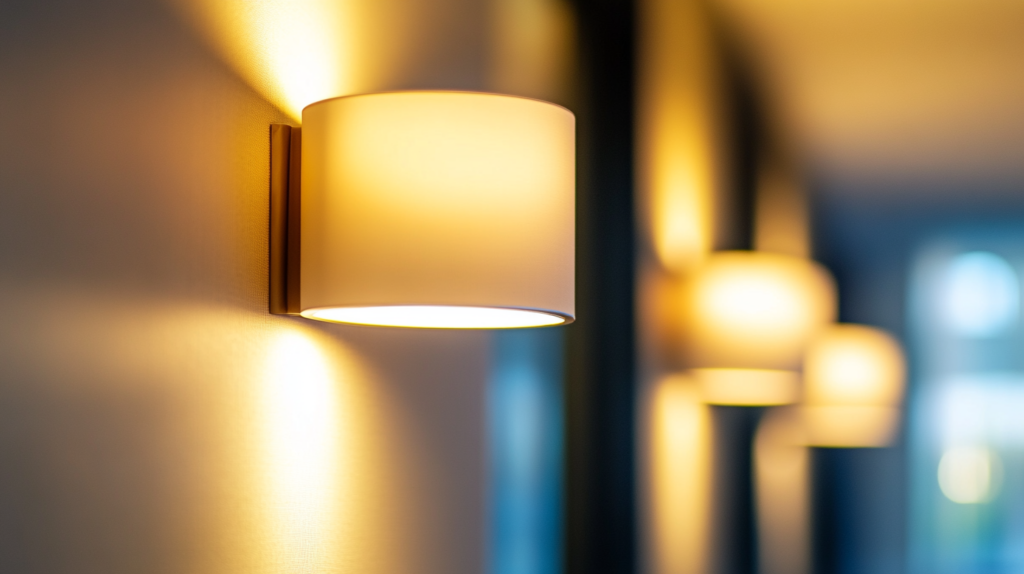
When choosing the best lighting option for your space, consider the purpose of the room. Do you need bright, focused light for tasks like reading or cooking, or do you want a softer, more ambient glow to create a cozy atmosphere?
Consider the purpose of the room
When choosing between uplighting and downlighting for our home, we must consider the purpose of each room. Different spaces have distinct lighting needs based on their functions. For example, a kitchen or study area may require more focused, task-oriented lighting provided by downlights.
These fixtures direct light downwards onto countertops, desks, and other work surfaces, making it easier to see what we’re doing. On the other hand, a living room or bedroom might benefit from the ambient glow of uplights.
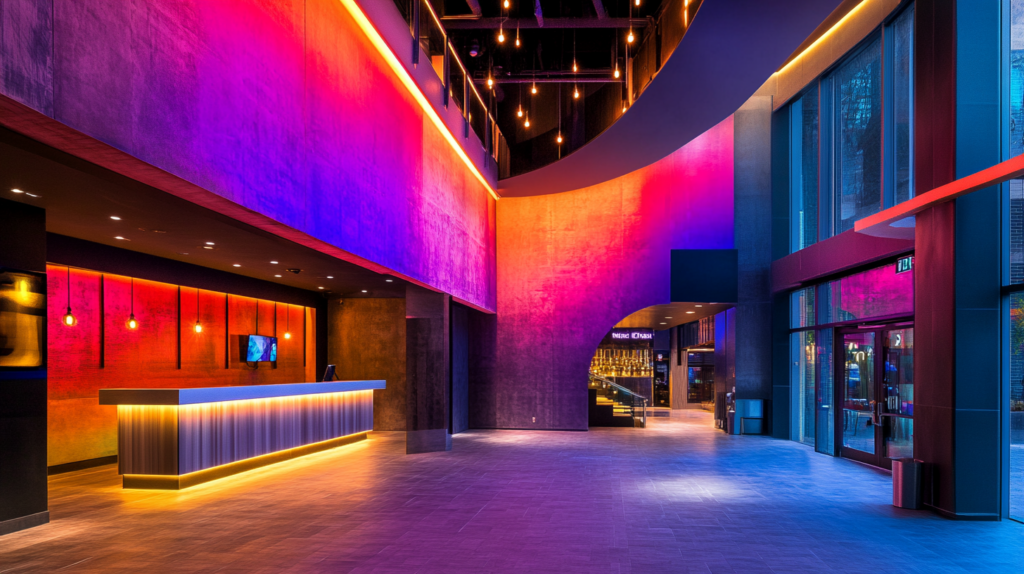
To make the best decision, we should think about the activities that take place in each room and the mood we want to create. Do we need bright, focused light for reading or cooking? Or would a gentler, more even illumination suit the space better? By understanding the purpose of each room and the lighting requirements that go with it, we can choose between uplighting and downlighting to create a functional and inviting environment in our home.
Whether we opt for the practicality of downlights or the ambiance of uplights, the right choice will enhance the look and feel of every room.
Balancing ambiance and function
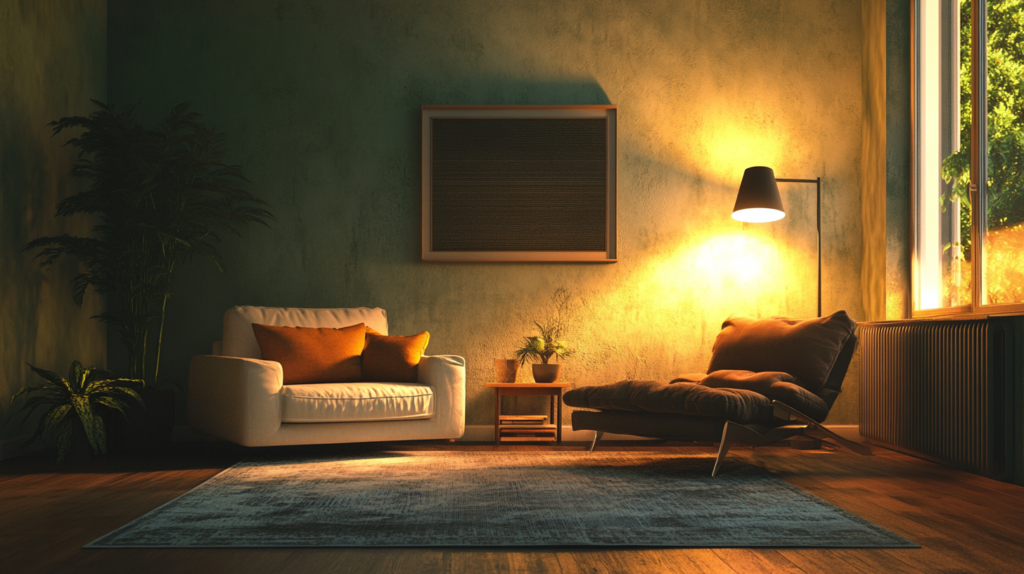
When choosing between uplighting and downlighting for our indoor spaces, we need to strike a balance between ambiance and function.
This type of light works well in living rooms, dining areas, and bedrooms where we want to foster a cozy and relaxing vibe. On the other hand, downlighting, like recessed ceiling lights or pendant lamps, provides focused task lighting for activities that require more visibility, such as reading, cooking, or working at a desk.
In kitchens and home offices, downlighting ensures we have ample brightness to see clearly and avoid eye strain.
By layering different types of lighting, we create a versatile space that adapts to our varying needs throughout the day. When selecting fixtures, we should also consider factors like the room’s size, ceiling height, and overall design style to ensure a cohesive look.
With careful planning and attention to detail, we can create a well-lit home that is both beautiful and functional.
Other factors to consider
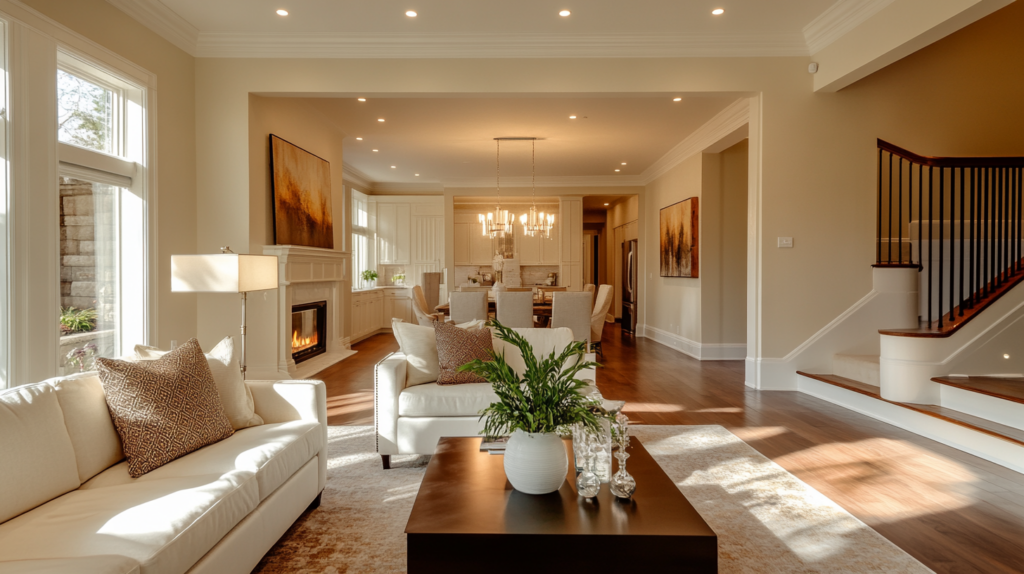
There are several other factors to consider when choosing between uplighting and downlighting for your indoor illumination. Let’s explore these factors to help you make an informed decision:
- Room size and ceiling height: The dimensions of your space play a crucial role in determining the appropriate lighting technique. In rooms with high ceilings, uplighting can create a dramatic effect by highlighting architectural features and creating a sense of grandeur.
- Aesthetic preferences: Your personal style and the overall design theme of your home should influence your lighting choices. If you prefer a modern, minimalist look, downlighting can provide clean lines and a sleek appearance. On the other hand, if you lean towards a more traditional or cozy aesthetic, uplighting would be your best bet.
- Furniture placement: Consider the layout of your furniture when deciding between uplighting and downlighting. Uplighting can be used to highlight specific pieces, such as artwork or sculptures, while downlighting is ideal for illuminating functional areas like reading nooks or workspaces.
- Energy efficiency: When selecting light fixtures, it’s essential to consider their energy consumption. LED bulbs are an eco-friendly and cost-effective option for both uplighting and downlighting. They consume less power, have a longer lifespan, and emit less heat compared to traditional incandescent bulbs.
- Glare and shadows: Pay attention to the potential for glare and shadows when positioning your light fixtures. Downlighting can sometimes create harsh shadows, especially if the fixtures are placed too close to the subject. Uplighting, on the other hand, can cause glare if the light source is directly visible. Experiment with different placements and angles to minimize these issues.
- Layering light: Rather than relying solely on one type of lighting, consider layering different techniques to create a well-balanced and visually appealing space. Combining uplighting and downlighting can provide both ambient and task lighting, allowing you to adjust the mood and functionality of the room as needed.
Frequently Asked Questions – Up & Down Lighting
What is the difference between uplighting and downlighting?
Uplighting refers to lights that point up, while downlighting points down. Uplighting casts subtle light on walls or ceilings, creating a warm and welcoming atmosphere. Downlighting illuminates areas that need bright light, like walkways or seating walls.
How can I choose between uplighting and downlighting for my home?
Consider the purpose of each space when selecting between the two lighting types. Uplighting works great for highlighting architectural features or creating a cozy ambiance. Downlighting provides directional light for tasks and adds a layer of safety and security.
Can I use both uplighting and downlighting in my home?
Yes, you can combine uplighting and downlighting to achieve the perfect lighting balance. For example, you might feature uplighting to showcase dramatic plants or statuary, while using downlighting for functional areas like walkways or ground-level foliage.
What are some energy-efficient options for uplighting and downlighting?
Many light bulbs, such as LEDs, offer energy-efficient solutions for both uplighting and downlighting. These bulbs use less energy and last longer than traditional incandescent bulbs, helping you save money on your energy bills.
How do I install uplighting or downlighting around my house?
To install uplighting, place a fixture low to the ground and angle it upwards to highlight a specific feature. For downlighting, position the light high up and direct it downwards to illuminate a larger area. Always follow the manufacturer’s instructions and consult with a professional if needed.
Can uplighting and downlighting be used for outdoor spaces?
Absolutely! Uplighting and downlighting work well for outdoor areas like gardens, pathways, and seating walls. Uplighting can showcase ornamental plants or garden features, while downlighting provides a layer of security and guides people along walkways at night.
I have been the project manager for Modern.Place since early 2016, spending three of those years working overseas on the manufacturing & procurement side of the LED lighting industry. Constantly learning and passing on knowledge to others while excited for what the lighting industry will involve into next.



